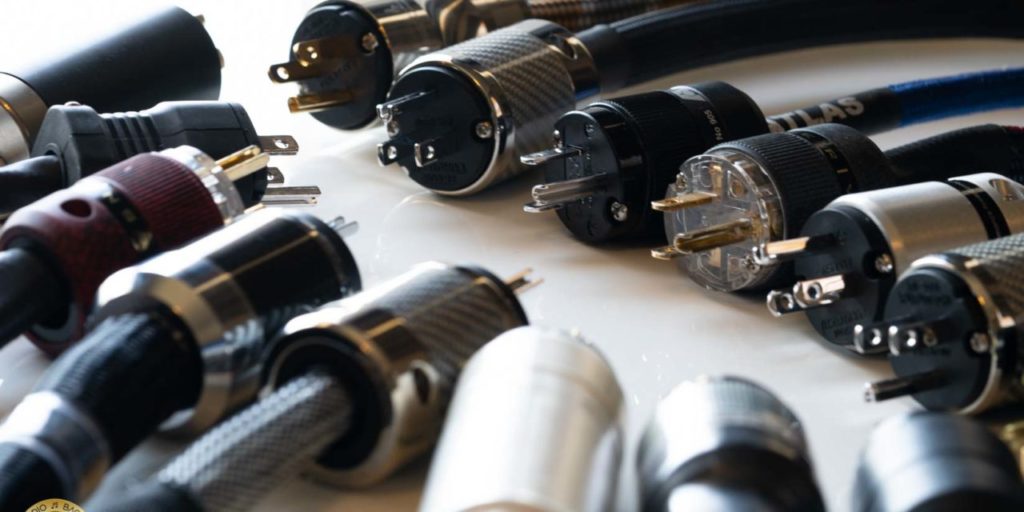I’ve been at the audiophile hobby to some extent for most of my adult life, but in many ways I’m something of a late bloomer. It wasn’t until just a couple of years ago that I added some high quality power cords to my system, at least a decade after it became standard practice to “upgrade” every component in a system with an aftermarket cord.
I’d had a long list of such upgrades on my system “To Do” the list these pasts few years and power cords finally came up in the queue. Right up until the point that I was taking my first one home to demo, the question that I think every budding audiophile has lingered – do these expensive cords really make a difference? By the time I confronted this question, it seemed most other audiophiles had either answered it already or dismissed it as a forgone conclusion.
From the moment I plugged my first high end power cord into my amplifier I knew the answer to that question was an emphatic “YES!” Power cords DO make a difference, a BIG one. At the time it sounded like the Transparent Premium Power Cord I bought for $600 had my $7000 Conrad Johnson amp sounding at least $1500 better in every way. In fact, it sounded to me at the time like this ultra-hefty and frankly, unwieldy cord helped my amp do everything it already did, just a whole lot better.
Then a week or so ago (it already feels like a year) I was exchanging emails with a friend about trying out some vintage electronics and I asked him – had he ever had a vintage unit modified to enable the use of a “modern” power cord with it? He said he had, once, and that after trying 7 different power cords with it he ultimately decided that the one that sounded the best was the original cord that came with the unit.
This got me thinking about whether, perhaps, my conclusions about the power cords I was using had been premature. I had never revisited the stock cord or any other cord for that matter, so certain I’d become of my Transparent Cord’s virtues. Now I figured, why not pull out the stock cord and do a quick A / B test? What was the harm?
That test did nothing to change my answer to the question of whether power cords make a difference. Certainly they do. But what I realized in less than 60 seconds was that the difference this one made was not the difference I wanted. That $600 power cord gave my system a hyped up, eye popping sound that in some ways was quite thrilling. The cord helped my system sound like it was on steroids, and this had a certain appeal that I’d come to expect and take for granted.
But lately I’d been noticing that getting some records to sound good, records that I had compelling reasons to believe should sound good, was difficult. These records didn’t sound bad, but they just had problems that it seemed to me they shouldn’t have, and I was having a hard time figuring out why.
One such record featured a pair of Franz Liszt piano concertos and that I’d bought from Better Records. In some ways the record was slamming, but in others it just didn’t sound right. I fiddled with VTA on that record until my fingers cramped, but I got nowhere. I’m at the point where I’ve bought enough records from BR to know they just don’t sell records with the kinds of problems this one had. So I decided to make it my mission to figure out how to get this one to reach its full potential.
In the end, it turned out my expensive power cord was taking away a lot of things I realized really want and was adding a lot of things I now know I don’t. In particular, the aftermarket cord was adding a glare to the music that was irritating, impossible to get rid of and something I simply came to accept or assume was just part of the recordings. And nowhere was this glare more apparent than on that Liszt record.
The aftermarket cord was also taking away some important qualities to the music that I’d failed to recognize before. With the stock cord on my amp the sound changed from hyped up and aggressive to cleaner, clearer and more natural. Audiophiles like to talk about “space around the instruments.” Now there was more of that space, and each instrument sounded more like that instrument SHOULD sound. Now my Liszt record started to reveal itself, and when I heard that happen I knew I was on the right track.
This was not a “my jaw dropped to the floor” experience. This was more of a “oh, that’s what I’ve been looking for” experience. It was the experience of beginning to hear the sound I’d been wanting to hear but hadn’t yet. It was also so completely compelling and obvious I had both my $600 power cords up for sale the very next day and will never give them a second thought.
This experience has also started something of a dismantling and reconfiguration of my system, and I’m eager to share more stories about how I’ve managed to improve the sound of my system DRAMATICALLY by subtraction, rather than more high cost additions. It’s both liberating and flat out shocking at the same time to discover that something that has become standard practice in the audio world, so much so in fact that very few people even question it, is in fact a “fools gold” solution to a problem that doesn’t even exist.
Stay tuned for more!
